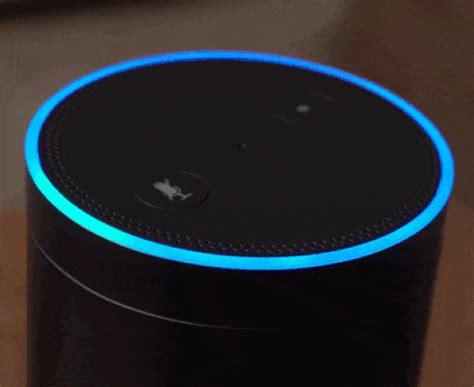I’ve recently installed a solar system for off-grid living. I’m pleased by the original selection to use devices made by Victron Energy, a Dutch company.
My first step was to review some of the full-kit versions of solar panel systems. I quickly found that the $6,000 price tag didn’t even include batteries. I even visited a downtown Albuquerque business but found that they were most definitely not interested in off-grid systems. In case you didn’t know it, there’s big money to be made in this technology niche. Next, I decided of course to purchase the individual pieces and to install it myself.
Most of the equipment I purchased in a single round-trip visit to SanTan Solar in southern Arizona. The inverter and related equipment were purchased from Solar-Biz which appears to operate somewhat remotely from Panama, the products were shipped directly from the manufacturer.
Solar Panels = $800
I purchased four Jinko 400W solar panels for the job. This then has the capacity of producing 1.6KW of power. I will note that the highest instantaneous power I’ve seen from the system just topped 1KW with a 30-day overall total of 60kWh so far (about $350/month then at average rates for power or at most a $4200/year payback). Not sure what I was thinking there but the $5.83/kWh figure I’d found on the Internet is way off from reality.
Charge Controller with Bluetooth = $785
The Victron SmartSolar MPPT 150/100 – TR charge controller manages the incoming solar power, matches it to the batteries and load and keeps track of its three modes of daily operation.

Batteries = $640
I purchased four deep-cycle Trojan T-105 6V batteries for the job, wired in series to present 24V to the charge controller and inverter. Each are rated for 225AH.

Battery Monitor with Bluetooth = $235
The Victron BMV-712 Smart provides a shunt to measure the power consumed across the circuits, a small LCD panel and the Bluetooth endpoint for monitoring it via the phone app.

Inverter with Bluetooth = $600
It’s the Victron Phoenix 24/1200 VE.Direct inverter which produces a sine wave output at 120VAC from the 24V provided from the battery bank. Add-ons allow it to be monitored over the phone app.


Wires, Accessories, Connectors and Such
Mounting the solar panels was sort of a pain, to be honest. I purchased some 4×4 posts, brackets in some cases, SuperStrut rails, SuperStrut sliding nuts and a variety of bolts, 2×4 lumber, nails and a few bags of QUIKRETE ($200). I left some room for expanding by a couple more panels in the future.

Of course, all this equipment had to be installed somewhere so I purchased and installed a SunCast storage shed ($700) having purchased pavers for a smooth footing ($84).

Both a battery cutoff switch ($20) and a circuit breaker ($15) were part of the design.


The panels were presented to the charge controller in a series/parallel way, electrically. This required MC4-style Y-adapters to be used ($24). The entire set is connected to the charge controller via PV cable ($30) and a pack of ten MC4 connectors ($10).
The battery wiring as well as the wiring to the cutoff switch, circuit breaker, shunt and inverter involved AWG-4 wire purchased in bulk in some cases ($10) plus jumpers ($30) and lug connectors ($20) as purchased from O’Reilly Auto Parts.

Monitoring Software
Fortunately, the Victron suite of products either directly have Bluetooth connectivity or an add-on feature which allows this. The net result is an entry in the Victron Connect phone app with usually several screens of functionality and configuration options.

Installation
Most of everything got installed into the storage shed. The inverter presents a single 120VAC outlet so I plugged in a three-outlet IKEA power strip for the sake of convenience. The box for the earlier DeWalt 1000W square-wave inverter is visible there in the corner. It decided to die during the first 30-days of use.

Total Cost = $4200
Wow. It’s almost impressive that the total cost in parts and delivery exactly matches the single-year payback in the electricity that it’s producing for me. Not sure what I was thinking earlier; I’d used a $5.83/kWh figure from the Internet which is totally wrong. It may take four to five years for this to pay itself off.
Strategy
If you don’t have an off-grid solar system then you’re probably not savvy to the way the charge controller operates. As much as a third of the daylight hours might have the charge controller just idling.
For those people who have a solar system tied to the grid, often the local power company is forced to pay you for the overage in power that you’re producing.
That said, if I’m over-producing power that can’t be directly used or which can’t be stored in the battery bank, the charge controller basically throws it away. Knowing this, I find myself today charging almost everything I can think of: MacBook, iPad, iPhone’s, USB-based storage devices, those 20V batteries for my DeWalt drill, etc.
What I plan to do later is to make a hot tub or similar and “dump” extra power into heating that water. Why not? Of course, I’ll also have a hot water heater and other appliances, but I probably won’t worry quite so much about wasting power during those days when there’s an abundance of sun.
I could just let the charge controller idle, ignore the extra power I’m not consuming and not worry about it. A better strategy though would be to figure out ways of storing that extra power…
For example, I’m thinking that one could use PEM cells and that extra power to split water into hydrogen and oxygen, storing each in separate containers. Later, when the energy is needed, PEM cells again can combine the two gases to generate power. It looks like the cost of PEM cells has risen sharply since the last time I dabbled in this technology, though.
One could also heat a large volume of water which is inside the house during the day and then allow it to radiate heat back to the house throughout the night hours.
Conclusion
The 1200W inverter is probably going to be enough for my needs for a while. During the construction phase I will note that I’m using a Briggs & Straton 3500W generator/inverter for running my power tools and such. So I’m not running a cement mixer from the Victron, in other words.
I’ll probably not plug in a hair dryer, a clothes iron or the espresso maker anytime soon. I’d hate to fry the electronics. I will probably try out the crock pot or smaller appliances, though. I’ve just tested running two simultaneous GermGuardian air purifiers on their highest settings, a Polar-Aire desk fan, a 4 cu. ft. Magic Chef refrigerator, lots of things charging all at once and the phone app reported perhaps a 70%-load at its worst. It’s working admirably, it was a fair investment up front but I think I’ll pay for all this within the span of a year.










